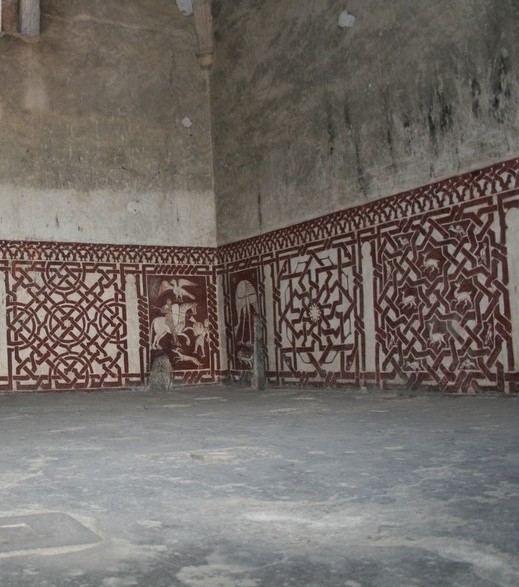
Try Amazon Audible Plus
Frescos from the Tower of Hercules, Segovia, Castile and León, Spain - 13th century

 A Spanish knight and a fallen Andalusian warrior. |
 A battle |
 A siege |


 A Spanish knight and a fallen Andalusian warrior. |
 A battle |
 A siege |
El convento de las MM. Dominicas de Segovia, como tantos otros, se estableció en unos palacios donados por miembros de la aristocracia a las monjas, entre ellos un torreón del siglo XIII, que quedó encerrado e inaccesible en la clausura monástica.
Lo más notable de esta torre, llamada de Hércules, son los zócalos pintados en dos de sus estancias, que constituyen uno de los conjuntos de pinturas mudéjares más importantes que se conserva.
Entre los motivos representados destaca la ornamentación de lacería, que cubre casi toda la superficie formando multitud de estrellas y figuras de gran belleza. Entre esta decoración geométrica el artista representó también plantas, animales, guerreros y hasta el asedio a un castillo, todo ello empleando únicamente un color rojo intenso aplicado sobre el yeso blanco del revoco. Se atribuye a un artista musulmán tanto por el predominio de motivos mudéjares, como sobre todo por las inscripciones en árabe que repiten la jaculatoria: “De Dios es el Poder. Demos gracias a Dios”. Source: duero mudéjar
The convent of the MM. Dominicans of Segovia, like many others was established in a palace donated by members of the aristocracy to the nuns, including a tower of the XIII century, which was locked and inaccessible to the monastic enclosure.
Most notable in this tower, called 'of Hercules', are painted on two of its rooms baseboards what are one of the most important sets of preserved Mudejar paintings.
Between the represented motif highlights is interlacing ornamentation that covers almost the entire surface forming many stars and figures of great beauty. Between this geometric decoration the artist also represented plants, animals, warriors and even a castle siege, all using only a deep red colour applied over white gypsum plaster. A Muslim artist is credited by both the prevalence of Moorish motifs, above all for the Arabic inscriptions that repeat the prayer: "In God is the Power. Let us thank God."